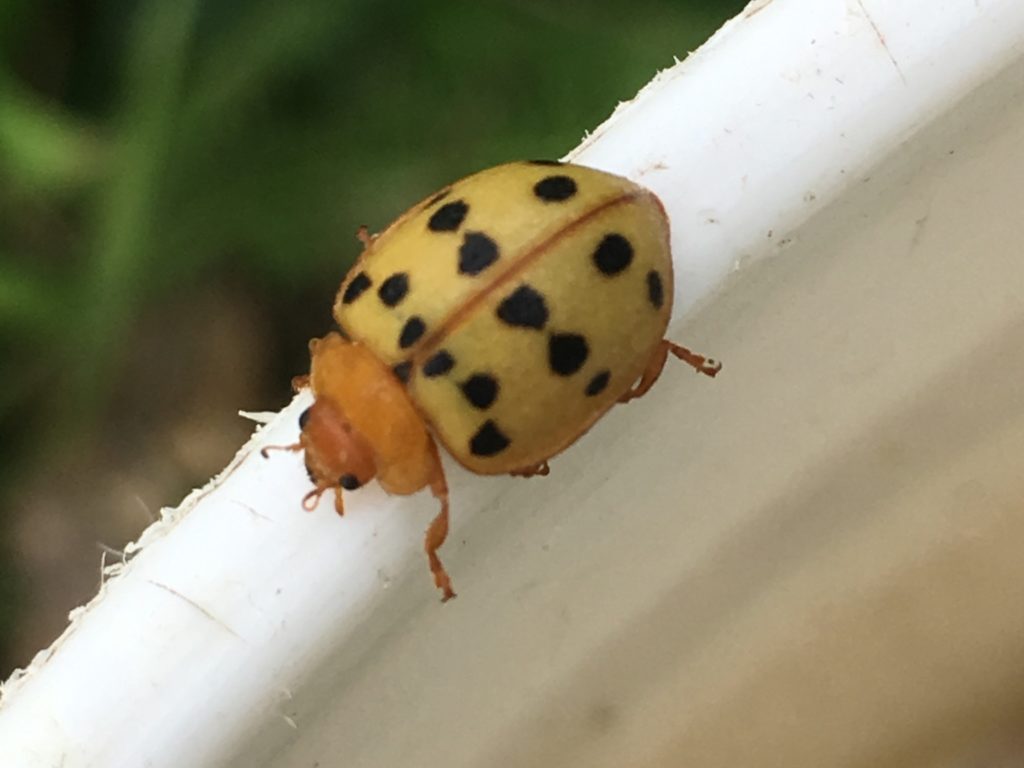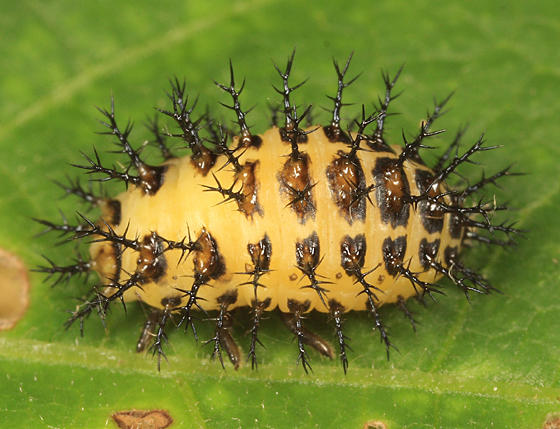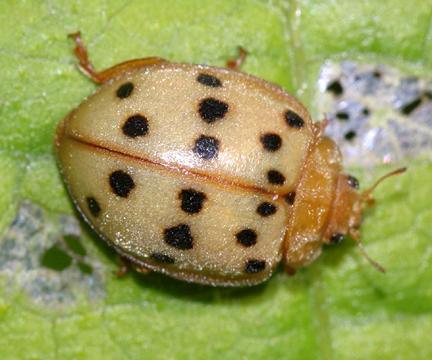
Mexican Bean Beetle © greener_pastures (iNaturalist)
The Mexican Bean Beetle is native to Mexico and the southwestern United States. It became established in the eastern U.S. in 1920. Its color ranges from reddish-orange to brown to golden yellow and it has eight black spots on each wing cover. Unlike most lady beetles, this species feeds on plants and is considered an agricultural pest species.
Status
Introduced
Last Seen
2020
Fun Fact
The Mexican Bean Beetles primarily eat the leaves of legumes. Leaves eaten by these beetles typically have a lacy appearance because the beetles only eat the underside.
Identification
Mexican Bean Beetles are 6 to 8.5 mm in length. The whole beetle is covered in tiny, pale hairs.
- Head: Yellow-orange to orange in color, spotless.
- Pronotum: Yellow-orange to orange in color, no spots.
- Elytra: Overall yellow-orange to orange in color. Each elytron has 8 black spots, arranged in three rows across the elytra.
- Legs: Orange.
- Often confused with: Squash Lady Beetle.
Habitat
Agricultural crops.
General Range
Originally Mexico and southwestern United States north through Oregon and South Dakota. Since the 1920’s, it has spread into the eastern United States: Kansas south to Louisiana and Florida; north to Michigan through Ontario, Canada; and east to the coast.
Food
Unlike most lady beetles, the Mexican Bean Beetle feeds directly on the leaves of plants. Preferred plants include “beans, soybeans, cowpeas, clover, alfalfa, kudzu, and beggartick/beggarweed.”
Life History
Mexican Bean Beetles are most active between June and October. It takes at least a month for eggs to mature into adults: eggs take approximately a week to hatch, larvae mature in two to four weeks, and pupation takes between five and ten days. Eggs are laid on host plant leaves, where both larvae and adults feed. There can be between one and four generations per year, depending on the climate. Adults overwinter in leaf litter or protected locations on the soil surface, emerging when temperatures reach 50 degrees F. Adults live around 6 weeks.
More Information
You can find more information about Mexican Bean Beetles using the following links:
Vermont Distribution
Visit the iNaturalist Observation Map and Occurrence Records to find out where Mexican Bean Beetles have been seen in Vermont.








